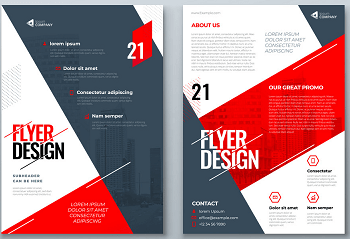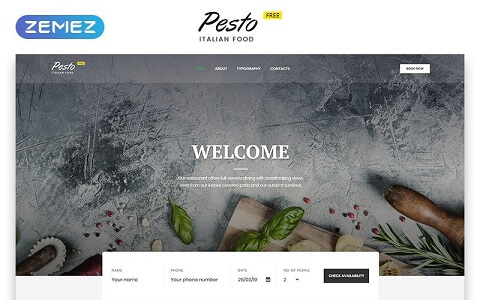What is a Template?A template or design template is a file that acts as a starting point for a new document. It is used with one or more documents and created with an overall design. For example, in Microsoft Word, you might use a template for making bio-data, resume or format as a business letter. The overall design or layout of a resume is designed with placeholder text that allows you to replace information relevant to you. 
A program may come with pre-designed templates that can allow users to create a template. When you are creating a custom template in terms of saving, reusing, and sharing, it may include theme effects, layouts, theme fonts, and even content. The template's design is dependent on the work user creating, but during your completed work, the similar themes and patterns should be shared by you. As compared to the layout for a story page, a design template will be different for a photo gallery page. Microsoft PowerPoint is a program that contains various design templates, which make your documents more effective and offer a cohesive and visual organization to your presentations. You can add different design and graphics on each slide that gives a better presentation for your content. For all Microsoft Office programs, there are templates available like Google Docs, Adobe InDesign, and other design programs. A template may also be described to any of the following: 1. In web design, a template, also known as a Web page template or page template that helps structure your overall design of a web page, which is provided by suppliers. For Web designer, it helps make Web design more effective and a lot of easier and displays the features of any website. When you are designing a website, the templates allow you to add text, images, and other widgets or items like navigation bars. There are hundreds of different templates provided by the companies like Squarespace that help users to make a website attractive easily. Essentially, a website template offers users various easier ways to make the effective design of a website built through web designing languages like HTML (Hypertext Markup Language) and CSS (Cascading Style Sheets). It may cover numerous features such as stripes, background banners, square or round pictures, cautiously laid out titles, including styled and laid out typography. 
Website templates provide a responsive layout for the website, which is one of the most useful elements of it. Responsive websites are the websites that can adjust their size according to display screen, which help small businesses and other organizations who have customers with smartphones, through which users can get website's services on their smartphone easily that helps to increase the business growth. In some cases, a responsive website template provides a modern, mobile-friendly interface of the website and allows users or business owners to put images and data directly into a responsive website from their legacy website. 2. A template, in programming, is a feature that can be used as the basis for unique units of code. In an object-oriented programming language, C++, programmers can select individual template classes to modify from available various standard template libraries. An example of such a template is MFCL, stands for Microsoft Foundation Class Library. Especially templates used with multiple inheritances and operator overloading as they are a valuable utility in C++. Templates reduce debugging efforts as well as reduce the coding effort associated with different data types. Two kinds of the template are provided by the C++ to implement general constructs, like vector, stacks, lists, and stacks: Class template: A class template is prefixed by the following term; however, it resembles a regular class definition: template <class typename="" identifier="">, followed by the class body declaration. The class templates in C++ are best suited to container classes, and its member function definitions and declarations are in the same header file. Function template: This type of template that is implemented with the help of template parameters. The template parameter is used to pass a type as a function argument, which is a special parameter type. Thus, without repeating the overall code, the functionality may be conditioned to over one type or class. With a type parameter, the function template can be declared either template <typename identifier> function declaration or template <class identifier> function declaration. The class and type name keywords have no difference. Generally, type-checking is needed by templates at compile-time. By offering special definitions, template-generated code may be overridden for specific types, called template specialization. Furthermore, for a given set of template arguments, a special version of a function is called explicit specialization. Advantages of C++ TemplatesYou can define a family of functions or classes with the help of C++ templates that have the ability to operate on different kinds of information.
Disadvantages of C++ Templates
Next TopicHistory of Computer Networking
|
 For Videos Join Our Youtube Channel: Join Now
For Videos Join Our Youtube Channel: Join Now
Feedback
- Send your Feedback to [email protected]
Help Others, Please Share










